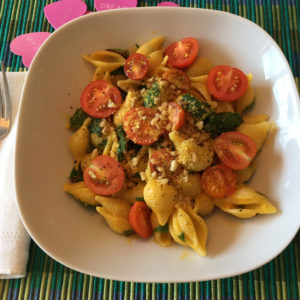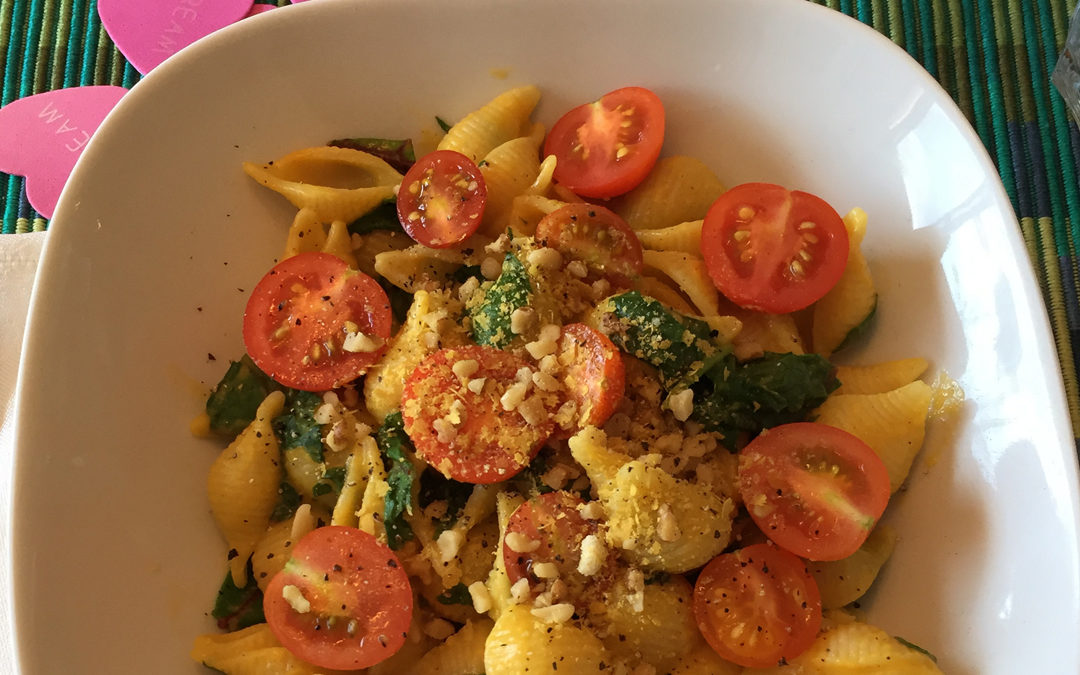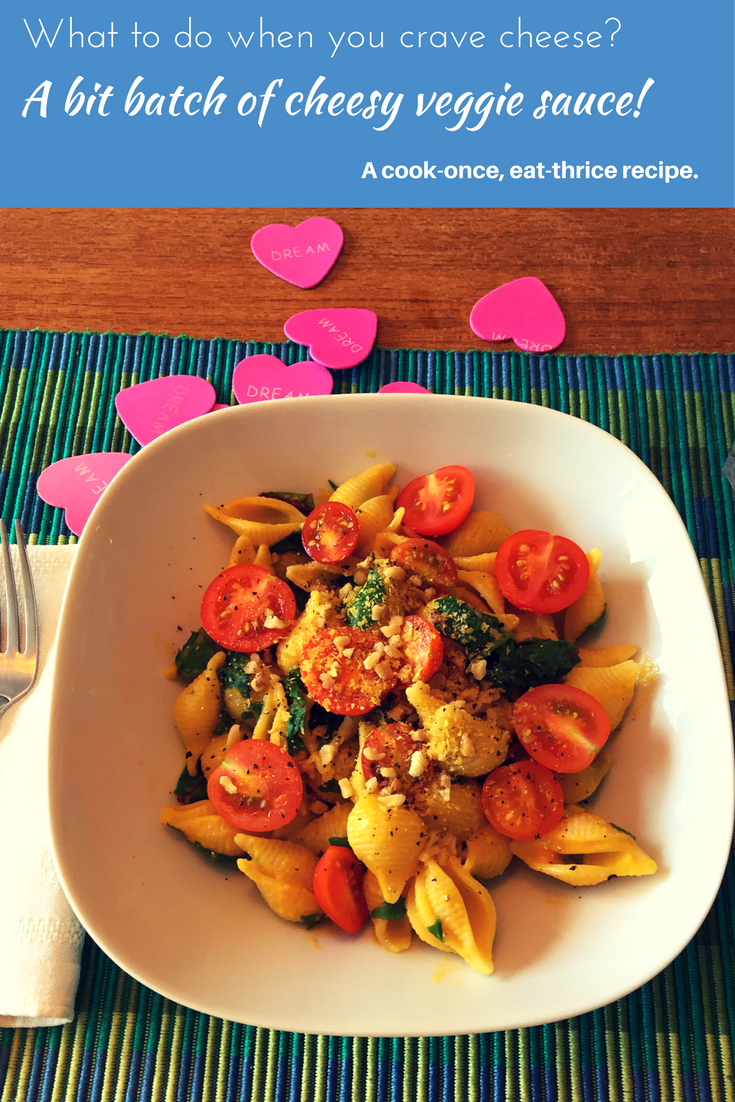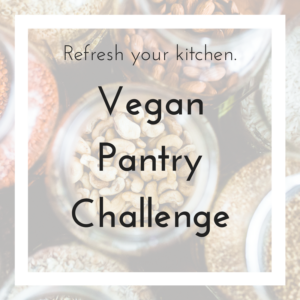One only needs to participate in any online forum for vegan beginners for about an hour to see THE question come up: “What is the best vegan cheese?” (Often followed with: “I tried XYZ brand and hated it.”)
Here is my answer.
The 30-day Cheese Detox
Dairy cheese is kind of a magic food. Its unique combination of fat and salt yield a unique mouthfeel that is practically impossible to reproduce. If you are new to a dairy-free diet, there is only a very small chance that you will find vegan cheese a tasty and appealing alternative unless you do a total cheese detox first.
Go 30 days without cheese, dairy or otherwise. I know it’s hard because cheese has become so pervasive, it’s now associated with practically every dish that we know how to cook. Try exploring cuisines that don’t even remind you of cheesiness, like Indian curries, Asian stir-frys, and noodle soups. Avoid eating out. Pay attention to your habits and cravings: observe what you are eating when you wish for cheese, and take note of you wish you could reach for, and why.
After a month without cheese, your palate and taste buds will have started forgetting what dairy cheese was all about. Chances are, if you have taken an opportunity to learn even more about where it’s coming from, you might be a little put off by the very idea of cheese made from animal milk. Especially if you know what happens to the babies that triggered the milk production in the first place. In hindsight, the texture will seem weird weird. Then you will be ready to explore the wonderful world of vegan cheese.
But… what is the best vegan cheese?
The true answer is: it depends.
Seldom do we actually need cheese. What we need is something cheesy. Hold that thought. But let’s deal first with that wine and cheese cocktail idea of yours:
If you want to nibble on a cracker smothered in some decadent, salty spread, perhaps topped with half a green grape or cherry tomato, go for a nut-based cheese. Some people really like Miyoko’s products, and there are artisan plant-based cheese makers in all major cities these days. You will have to try a few to find your favorites. For a more casual occasion, there is Kite Hill almond-based “cream cheese”. I had it recently and was quite impressed by the clean taste and texture. Here in Vancouver, we have Spread’Em Kitchen and it’s awesome.
Of course, you can try making your own fancy nut cheese. There are a few books on the market these days but, unless you are quite committed to the art of plant-based cheese making, there is none that I can recommend. Culturing foods requires more patience and time than most of us have these days, and some authors have no shame in suggesting the use of weird ingredients. You may have good results once or twice, but unless you invest time in this hobby on a regular basis, you will end up stuck with extra clutter in your pantry. (The only book I really like in this category is Miyoko Shinner’s Homemade Vegan Pantry, because it teaches lots of other useful skills, like making various vegan meats. And if you are really committed, try Karen McAthy’s book.)
What you really want is something cheesy.
Much easier! What is that popular and comforting experience made of?
A thick, somewhat gooey texture. White to orange in color. Rich in your mouth. Flavor hints of the plants the cheese fame from, usually emanating only a mild aroma. And a subtle tart note on the finish.
I have parsed through a bazillion cheesy sauce recipes, and I have compounded them all to come up with this one. It is merely a suggestion: I encourage you to play with the quantities of each ingredient and to change the veggies and seasonings. You will discover your own personal cheesy spot and lots of joy will result. Stirred into a hot pot of pasta with some greens and maybe fresh tomatoes, with a dash of hot sauce, it’s my perfect comfort food. Bonus: you can make a really big batch, freeze in individual jars, then eat it with many different meals.

Cheesy veggie sauce for all your cravings
Ingredients
- 1 small onion sliced
- 3 large potatoes (Yukon Gold preferred) sliced or chopped roughly
- 5 medium carrots brushed well and sliced in 1/2
- 1 cup water saved from cooking the vegetables
- 1/2 cup cashews, raw previously soaked for a few hours if you do not have a high-power blender; you can also use white beans such as cannellini or Great Northern
- 3 tablespoons nutritional yeast adjust to taste
- 1-2 cloves garlic or
- 1 teaspoon apple cider vinegar lemon juice works too
- 2 tablespoons tomato paste
- 1 teaspoon mustard Dijon or similar
- dash hot sauce or cayenne pepper avoid if your kids are averse
- 1/2 teaspoon sea salt
- 1/4 teaspoon turmeric
Instructions
- Place the cut onions, potatoes, carrots in a medium pot and add just enough water to cover.
- Bring to a boil on high heat then reduce the heat to maintain a low boil.
- Cook until the veggies are very well done, falling apart at the prick of a fork, about 15 minutes.
- Just before draining the veggies, carefully recover about 1 cup of the cooking water using a ladle. Set aside.
- Drain and transfer the cooked veggies to your food processor or blender. Add everything else now - except the cooking water.
- Process or blend until perfectly smooth, scraping the sides with a spatula as needed. Add a little cooking water at a time to achieve a somewhat runny, but not totally liquid, texture. (Think about the perfect dipping sauce.) Taste and adjust seasoning.




